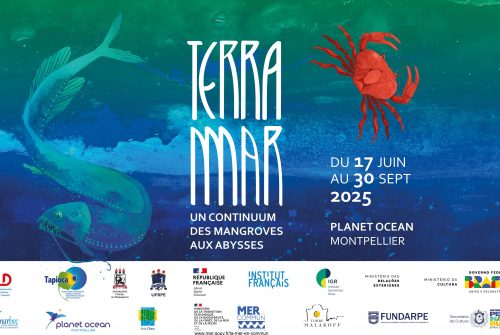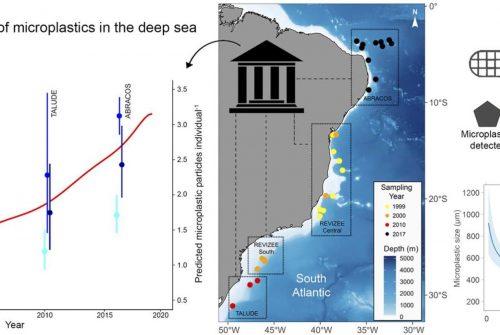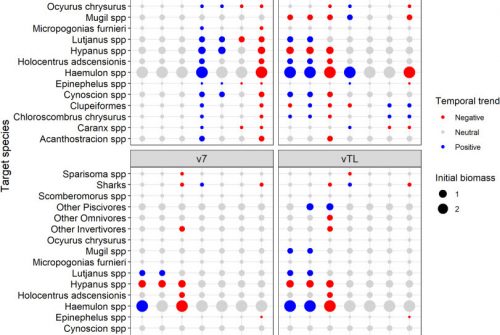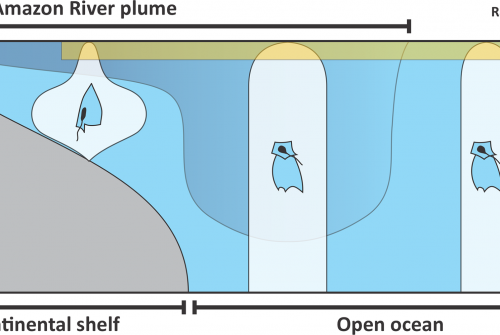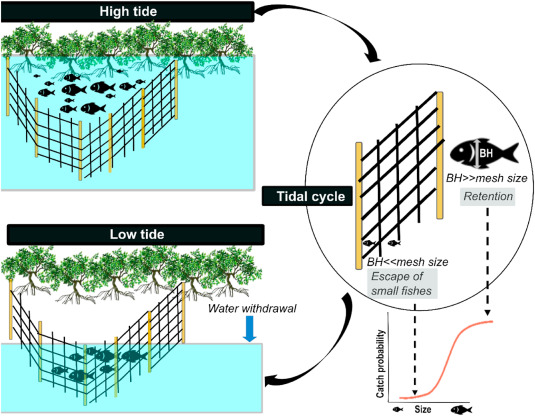
For centuries, intertidal fishing in mangroves using block nets has been of socio-economic and cultural importance to many tropical fishing communities. However, data characterising these fisheries are scarce, and no study on their selectivity has been conducted. Additionally, assessing the impact of block net fisheries is complex because they target migrant fish species with different life cycles and morphologies in highly dynamic environments. Here, we investigated the catch composition and selectivity of intertidal fishing in northeastern Brazil to discuss how this should be considered for management purposes. We described the spatiotemporal variability of catch composition in four estuaries with distinct physicochemical parameters. We used three model species (Eucinostomus argenteus, Mugil curema, and Centropomus undecimalis) to understand how block net selectivity varied according to fish morphology (body height (BH)) and life cycle (size at first maturity and ontogenetic stages). We found an important spatiotemporal variability in catches that are likely linked to local (geomorphology, precipitation) and seasonal factors (species reproduction). Immature individuals dominated the catch of the three species of interest, confirming that mangroves are a nursery for many migratory species. Moreover, for the first time, we described the S-shaped curve selectivity pattern of block nets, which is unusual for passive nets and prevents the escape of larger individuals, making this gear very efficient to capture a wide range of sizes. We found that comparing length at first catch (Lc) and size at first maturity constituted a simple way to consider fisheries’ interference with the species life cycle. In addition, the body height at Lc was similar between species, making the ratio BH/TL a possible proxy of Lc in a data-poor context. The main concern about block net fisheries is the growth overfishing of long-lived species targeted at the coast. Since mangrove and coastal fisheries explore the same species at different ontogenetic stages, an ecosystem approach to fisheries should be applied to the entire coastal continuum. This approach should involve effort regulation to control the overall fishing pressure, but not mesh size limits that would considerably be detrimental to block net fisheries yield.
DOI: doi.org/10.1016/j.ocecoaman.2022.106148
Reference
Latifa Pelage *, Humber Agrelli Andrade, Rafaela Passarone, Thierry Frédou



